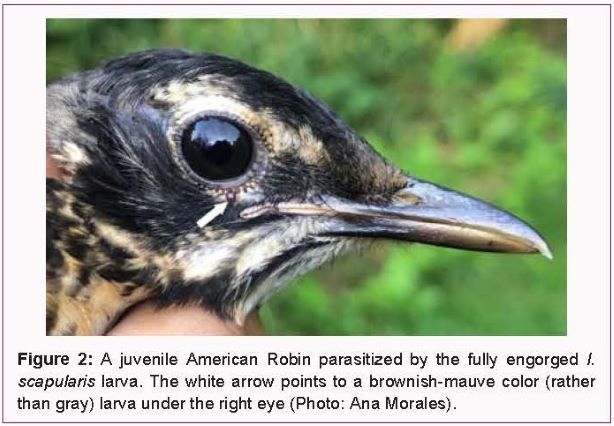
SHARE THIS ARTICLE:
Environmental Pollutants: Impact on Blacklegged Tick

The Open Journal Of Public Health, (Scott, J.D. et al.), published “Morphological Abnormalities in Blacklegged Tick, Ixodes scapularis, Initiated by Environmental Contaminant,” on August 29, 2022. In this publication authors describe the deformity observed in a tick collected from a songbird during routine bird monitoring activities.
The tick, collected from a juvenile American Robin, was a fully fed larva with normal physical structure which then molted into a deformed nymph. Because of the abnormalities observed on the emerged nymph, molecular testing was used to identify the nymph as a blacklegged tick.
The DNA barcoding did not show any genetic abnormalities in the tick, and the head of the tick had not been damaged on the larva when collected. Authors also considered pathogen influence, however ticks have evolved with pathogens, and none are known to cause physical abnormalities. Authors note that there are several organic chemicals that can cause abnormal structural development in I. scapularis ticks. Based on the findings in the research they presented, it appeared that teratogens, which are substances that may produce physical or functional defects, in the environment are influencing a downward trend of American robins in the region.
Authors suspect that the abnormalities observed in the blacklegged tick nymph were most likely caused by a toxic chemical in the environment that the larva ingested from the juvenile American Robin that had been feeding on earthworms exposed to these teratogenic chemicals in the soil.
For More Information
Other LDA Articles that Relate





